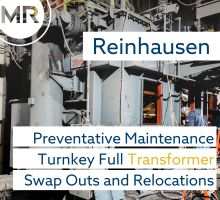Tata Steel, Rio Tinto Sign Agreement on HIsarna
04/21/2011 - Tata Steel and Rio Tinto have signed a licensing agreement further supporting technological and commercial development of the HIsarna™ direct iron smelting process.
Tata Steel and Rio Tinto have signed a licensing agreement to further support technological and commercial development of the environmentally friendly direct iron smelting process called HIsarna™.
The agreement defines how the two parties will work together, sharing their existing knowledge of the two technologies that are combined in the new process. It also covers how benefits from future successful marketing of the technology will be made available to both parties, as well as to the members of ULCOS, the consortium of European steelmakers in whose name the project is being carried out.
The agreement was signed last week by Dr. Debashish Bhattacharjee, Group Director, Tata Steel Research, Development & Technology (RD&T), and Rio Tinto, represented by Mr. Sam Walsh, Chief Executive, Rio Tinto Iron Ore.
The HIsarna ironmaking process comprises a combination of two technologies: cyclone pre-reduction technology (CCF), owned by Tata Steel, and bath smelting technology (HIsmelt) owned by Rio Tinto. The combination of these two process technologies offers excellent opportunities for the collection and geological storage of CO2, the ability to utilize lower-cost raw material feeds, and the prospect of energy savings through the elimination of certain stages of conventional ironmaking processes. According to the partners, the new technology has the long-term potential to replace conventional blast furnaces, coke ovens and sinter plants and to reduce CO2 emissions by more than 50% if combined with Carbon Capture and Storage (CCS).
“Commissioning of the HIsarna pilot plant represents a potentially key step toward a compact and low-cost ironmaking process with a significantly reduced environmental impact,” said Tata Steel Europe MD and CEO Dr. Karl-Ulrich Köhler. “The plant demonstrates one of the first and most promising ways in which the European steel industry is developing breakthrough technologies in response to the challenge of climate change.”
A HIsarna pilot plant — funded jointly by ULCOS, the European Commission and the Dutch Ministry of Economic Affairs — is being commissioned at Tata Steel’s IJmuiden steelworks in the Netherlands. The purpose of the 60,000 tonne/year plant is to allow the two constituent technologies to be tested and later optimized in combination. The longer-term development plan includes a scaled-up version of the smelter.
The international project team, led by Mr. Koen Meijer of Tata Steel RD&T, has members from Tata Steel, Rio Tinto and ULCOS.
The European operations of Tata Steel (formerly known as Corus) comprise Europe's second-largest steel producer. With main steelmaking operations in the UK and the Netherlands, they supply steel and related services to the construction, automotive, packaging, material handling and other demanding markets worldwide. Tata Steel is one of the world’s top ten steel producers. The combined group has an aggregate crude steel capacity of more than 28 million tonnes and approximately 80,000 employees across four continents.
Rio Tinto is a leading international mining group headquartered in the UK, combining Rio Tinto plc and Rio Tinto Limited. Rio Tinto's business is finding, mining, and processing mineral resources. Activities span the world but are strongly represented in Australia and North America with significant businesses in South America, Asia, Europe and southern Africa.
ULCOS stands for Ultra-Low Carbon dioxide (CO2) Steelmaking. It is a consortium of 48 European companies and organizations from 15 European countries that have launched a cooperative research & development initiative to enable drastic reduction in carbon dioxide emissions from steel production. The consortium consists of all major EU steel companies, of energy and engineering partners, research institutes and universities and is financially supported by the European Commission. The aim of the ULCOS program is to reduce the carbon dioxide emissions of today’s best routes by at least 50%.



.jpg?lang=en-US&ext=.jpg)
.gif?width=220&height=200&mediaprotectionhash=374c6b9a31f2b2fbfc7937391034efb46fd57feba997b9ad2ae9a0bd3d48329d&ext=.gif)

.gif?width=100&height=200&mediaprotectionhash=e2d5b15d68f84f22038524be6c58e5268d67b7f44494b544e29a8d53c5b959ba&ext=.gif)


